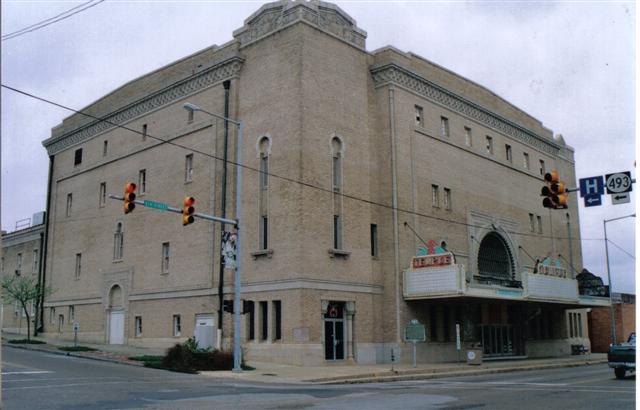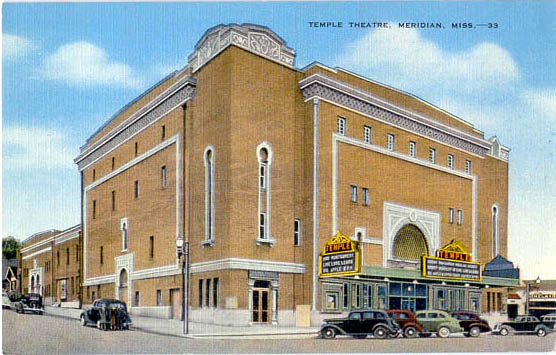From The Temple Theater Website: By the early 1920s, the Meridian membership of the Hamasa Shrine had outgrown their building and wanted a larger facility that would not only accommodate their needs for the various meetings and ceremonies they conducted – but also as a multi-purpose facility to serve the community. Architect Emile Weil was engaged to design the building – as he was already well known for his grand designs. Mr. Weil delivered a plan that met the Shrine’s expectations – and perhaps even more. Construction began in 1923 – with the Grand Ballroom being completed in November 1924. The Shrine moved in and conducted it’s meetings and ceremonies there while the rest of the building was being completed.
The building today is much the same as originally built -exterior in Moorish Revival style with the interior featuring Byzantine motif decorations with exceptional attention to details. Being built on a corner allowed each part of the building to enjoy it’s own street access – the theater facing onto 8th Street; while the ballroom is accessible from 24th Avenue. The theater’s construction was completed some months later – taking it’s place as a truly grand facility that rivaled any in the nation – In fact when completed in 1928 – the Temple’s stage was second in size only to the Roxy Theater in New York. However – for the first few months after completion – the only entertainment available were the occasional traveling show and wrestling matches.
In 1927 the Hamasa Shrine struck a deal with the Saenger Theater chain that would begin the process of allowing the Temple to fulfill it’s potential. Signing a lease/management contract made the Saenger brothers of New Orleans responsible for bringing movies and other entertainment to the Temple Theater for the next 40 years. As part of their “upgrades” made to the theater, a 3 manual 8 rank Robert Morton Theater Pipe Organ was installed to accompany the silent movies of the time. Even though the silent era didn’t last much longer, the organ continued to provide a lot of entertainment. During the next 40+ years thousands of movies and hundreds of famous (and not so famous) entertainers would grace the Temple with some of the finest entertainment available anywhere in the world.
In 1973 the Hamasa Shrine undertook a general restoration project which ranged from repairing damaged plaster, cleaning and painting, reupholstering the seats and replacing the carpets. Since then and until recently – the Temple Theater has seen only limited use, and only nominal maintenance – and the building was put up for sale.
In February 2009, a deal was struck between the Shriners and a semi-retired business man from Dallas. Roger Smith stepped forward – and has purchased the entire facility – Theater and Ballroom – and has committed to not only bringing the Temple back to it’s former splendor, but to create and present a rich and full calendar of events and entertainment.





One thought on “Temple Theatre for the Performing Arts”